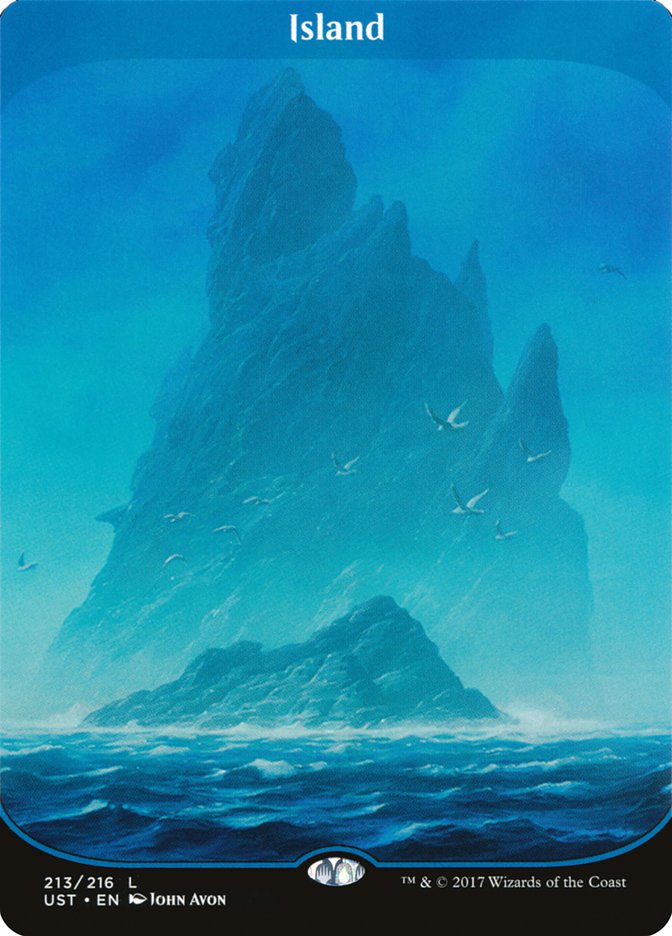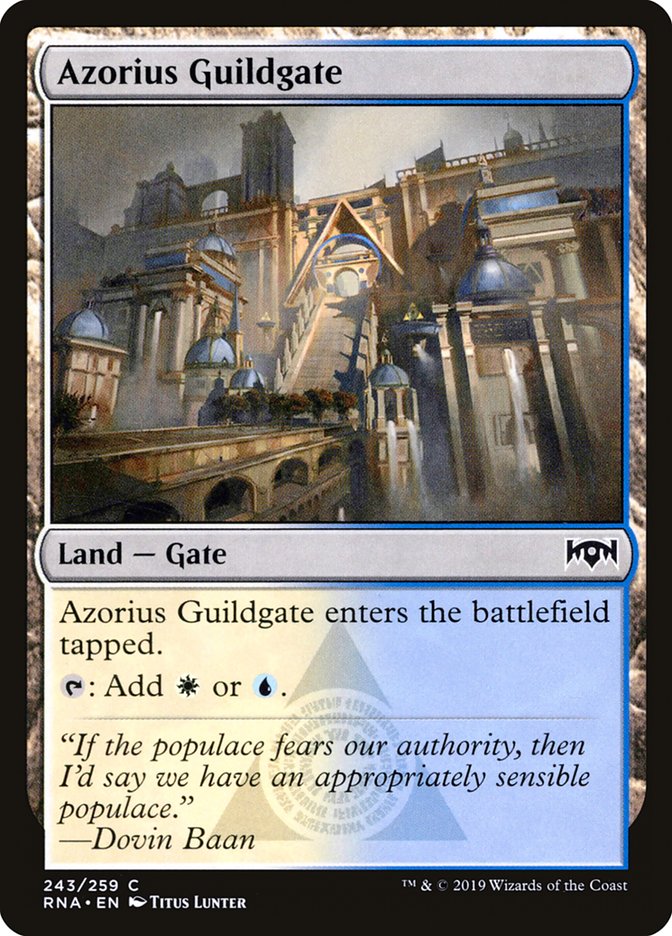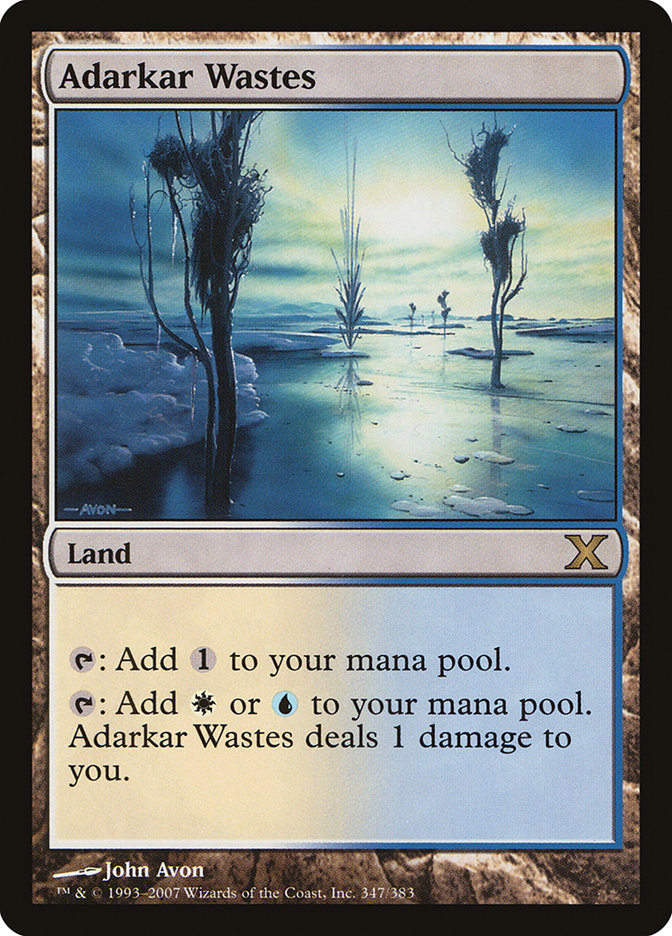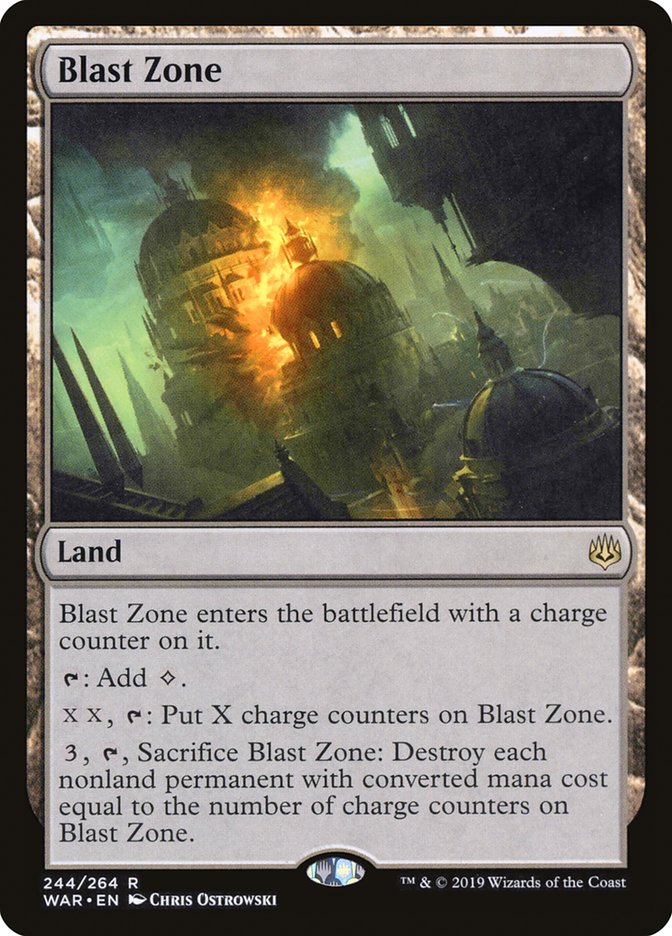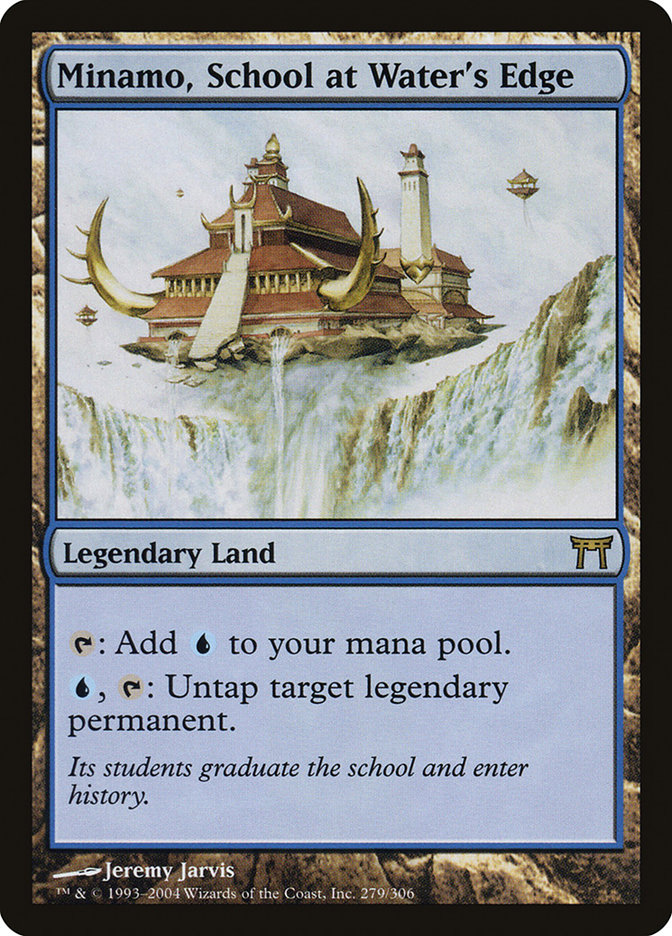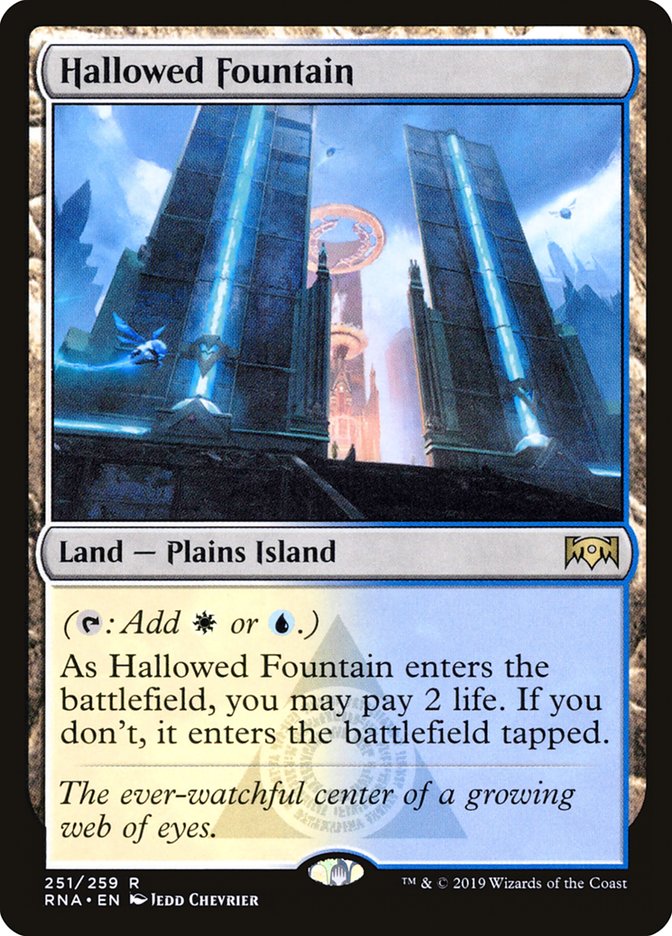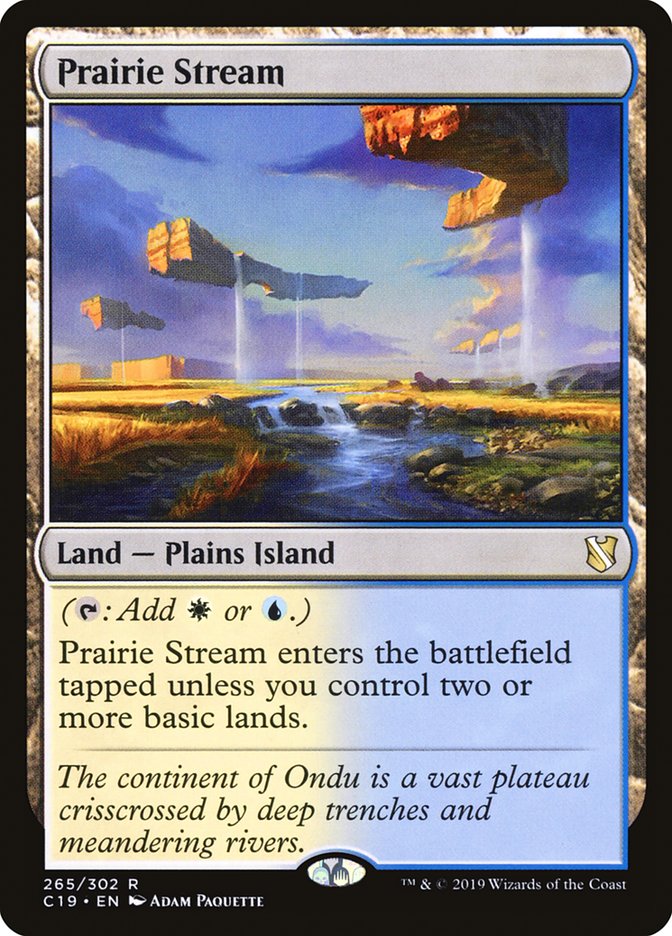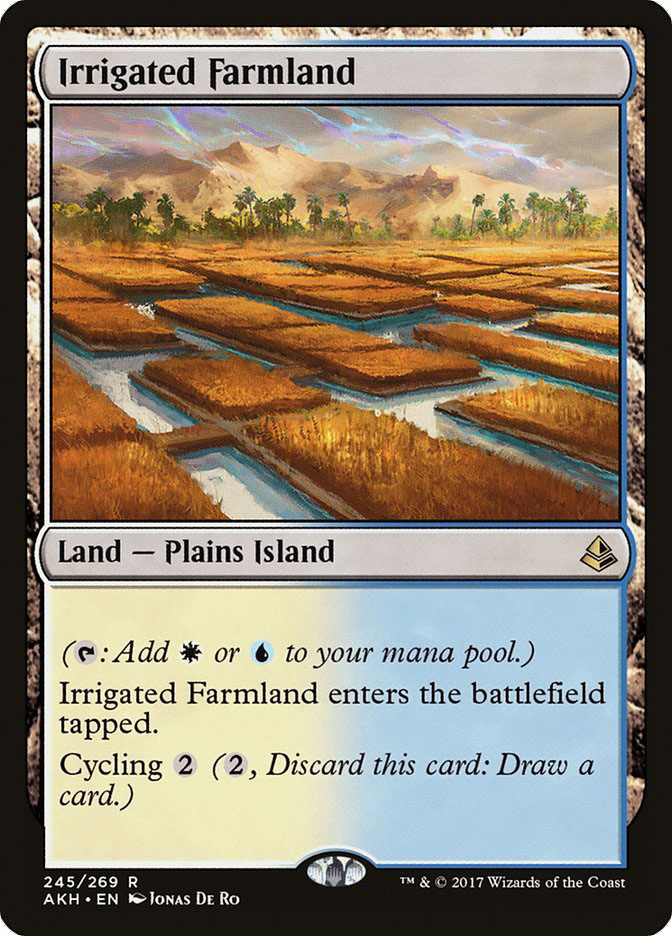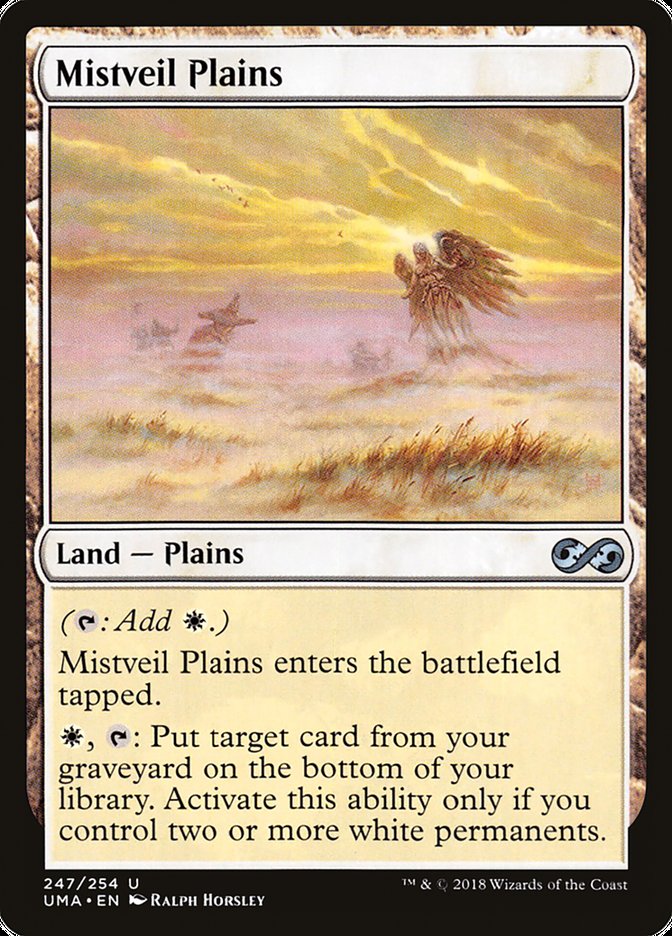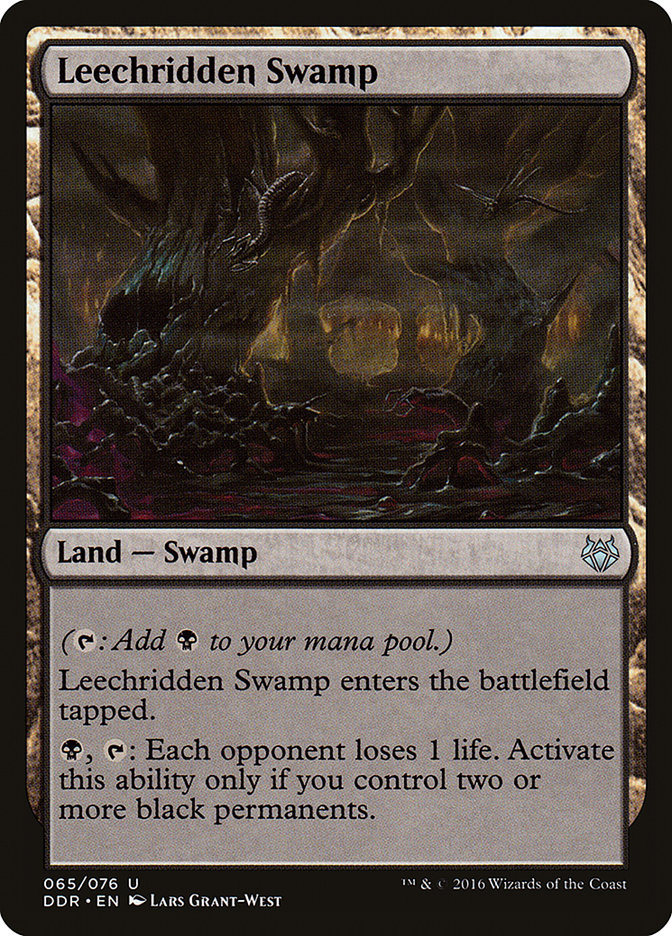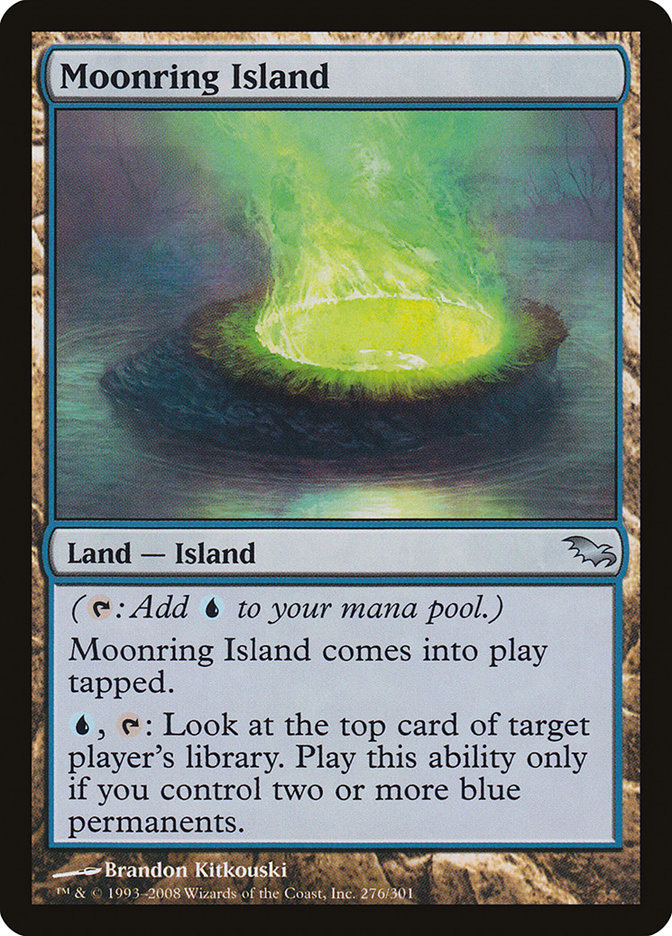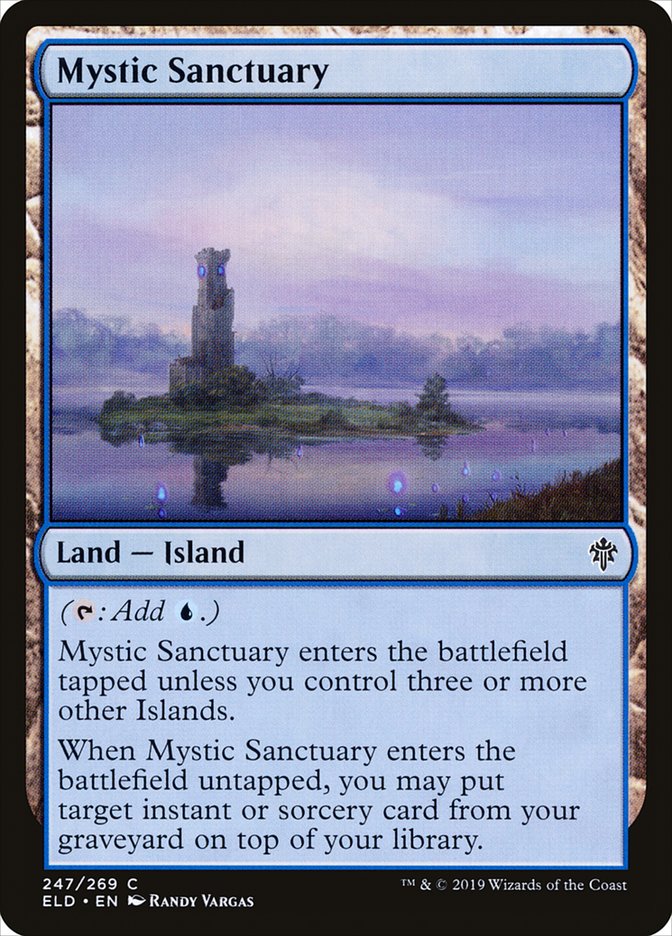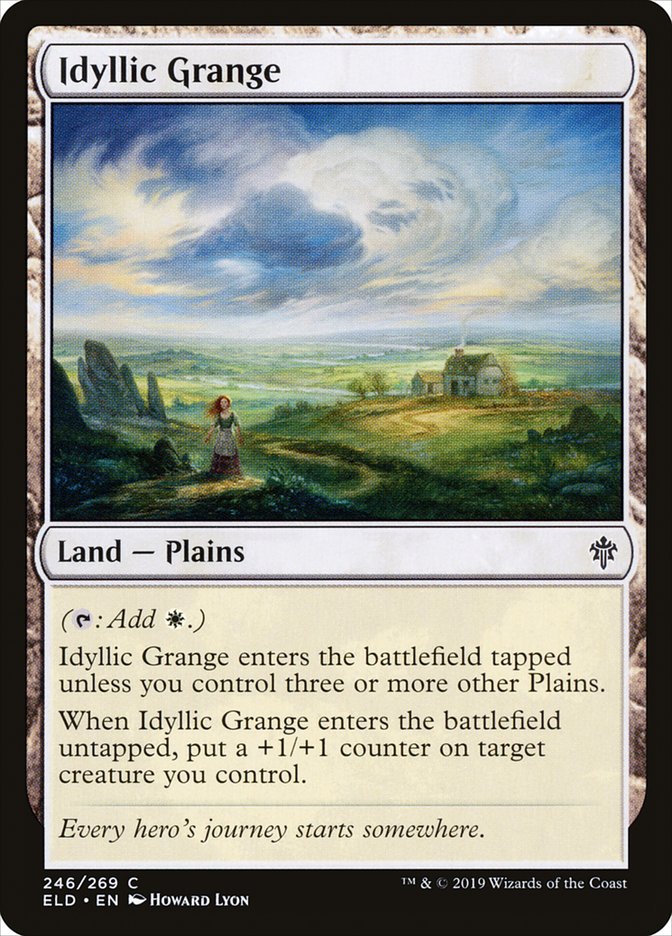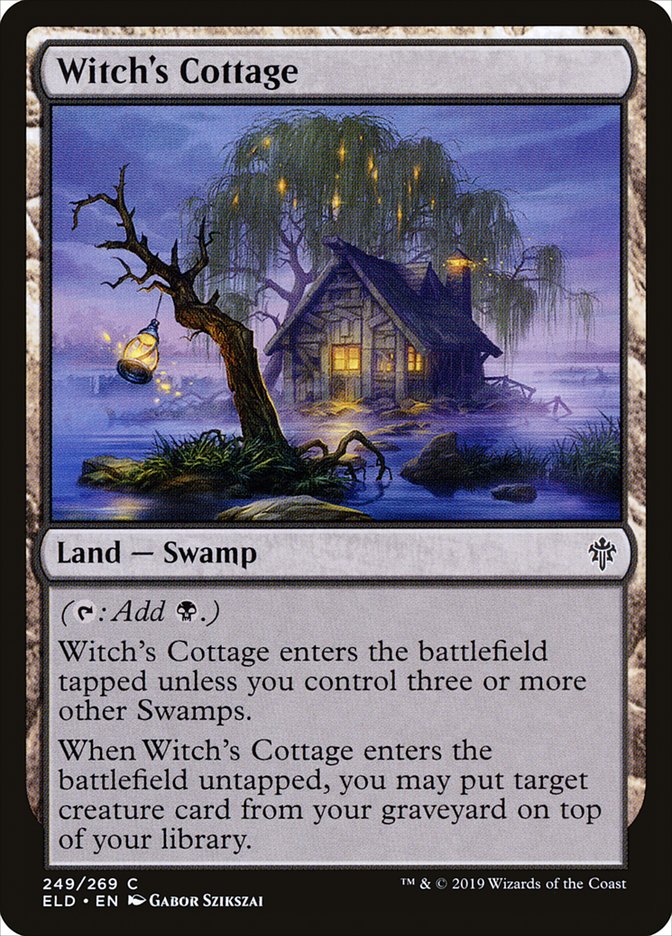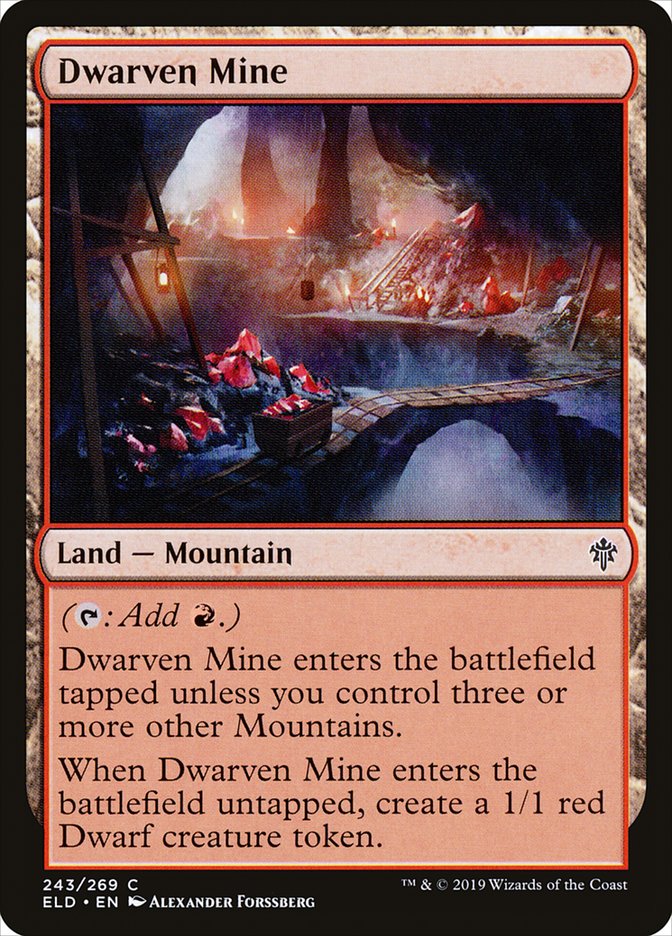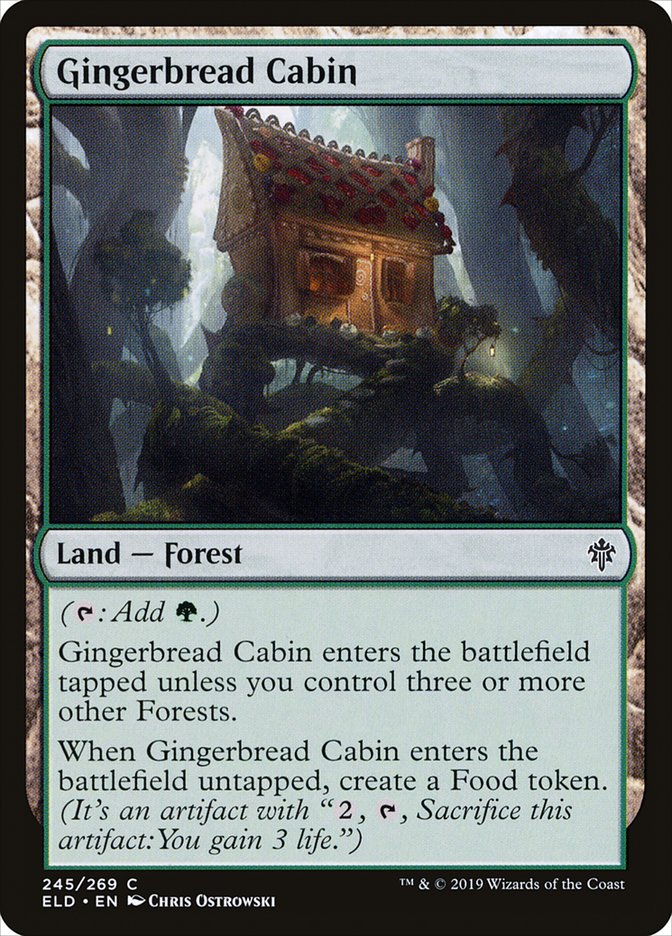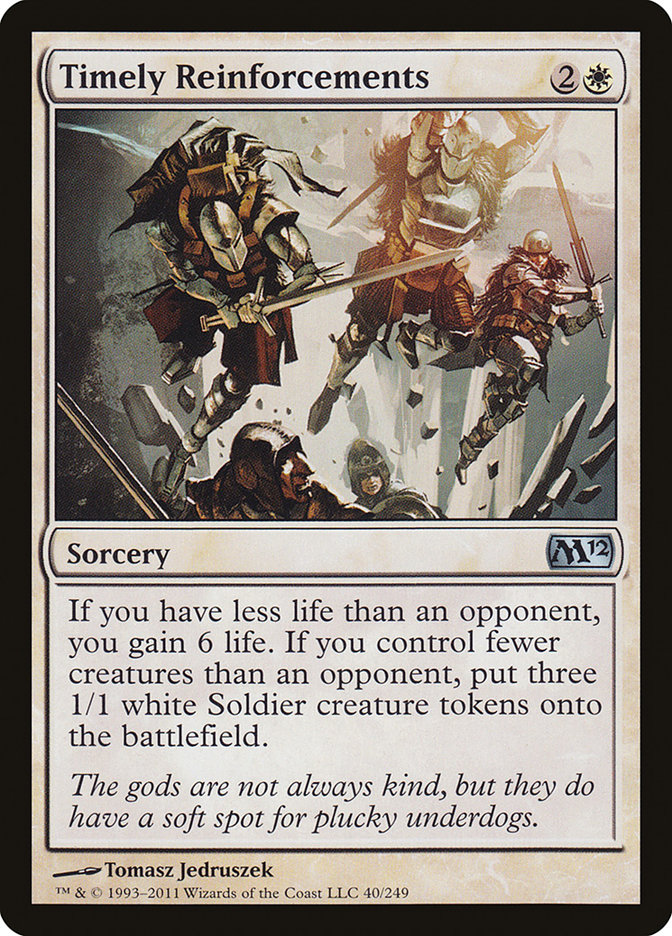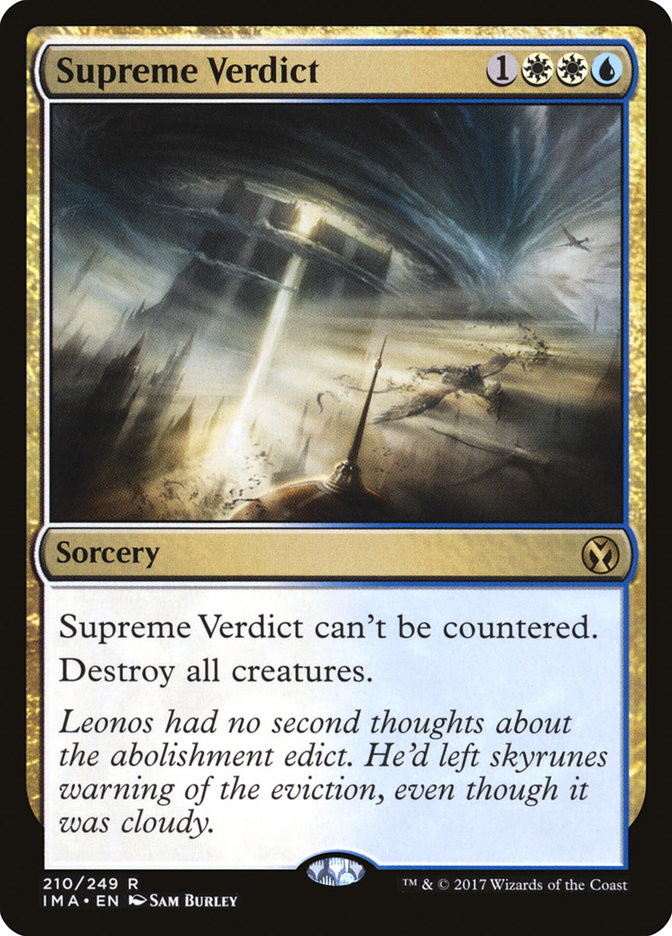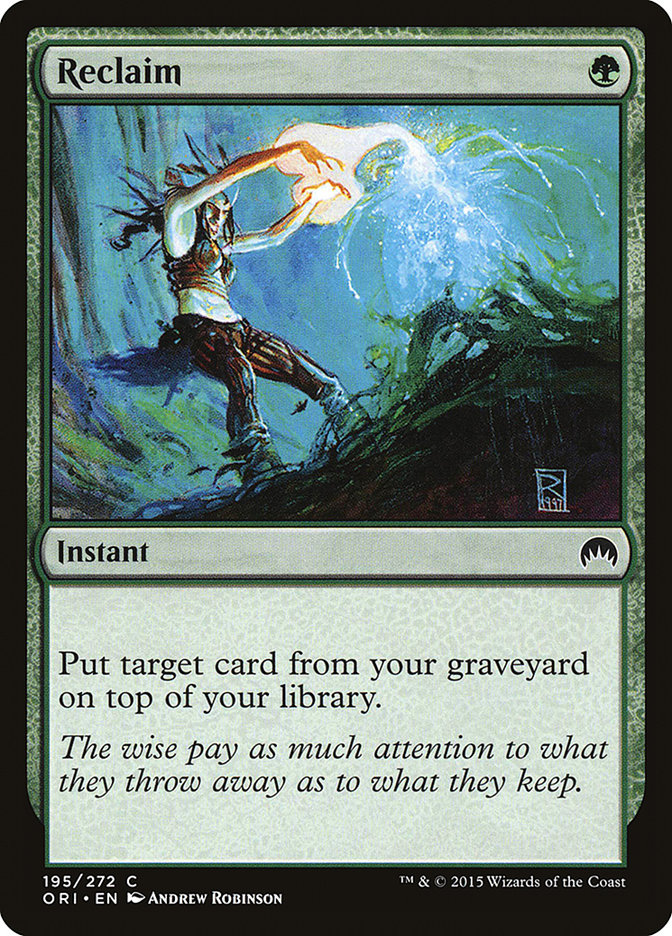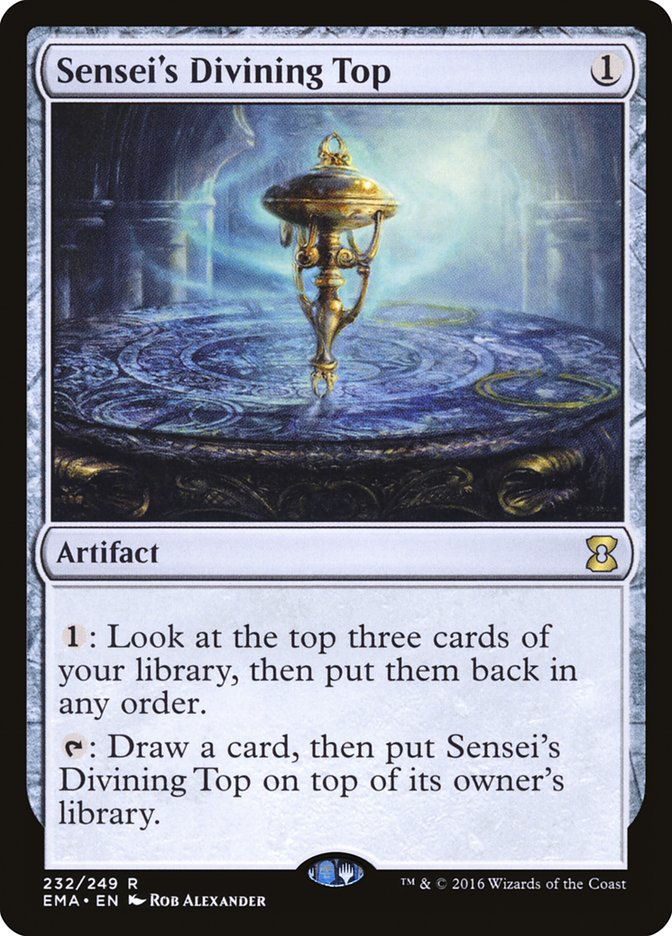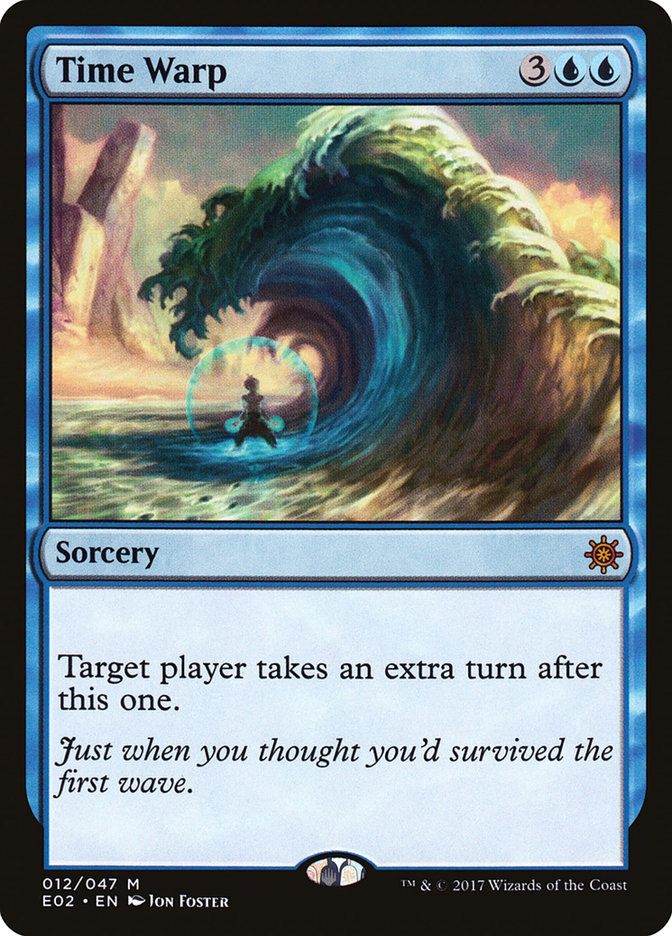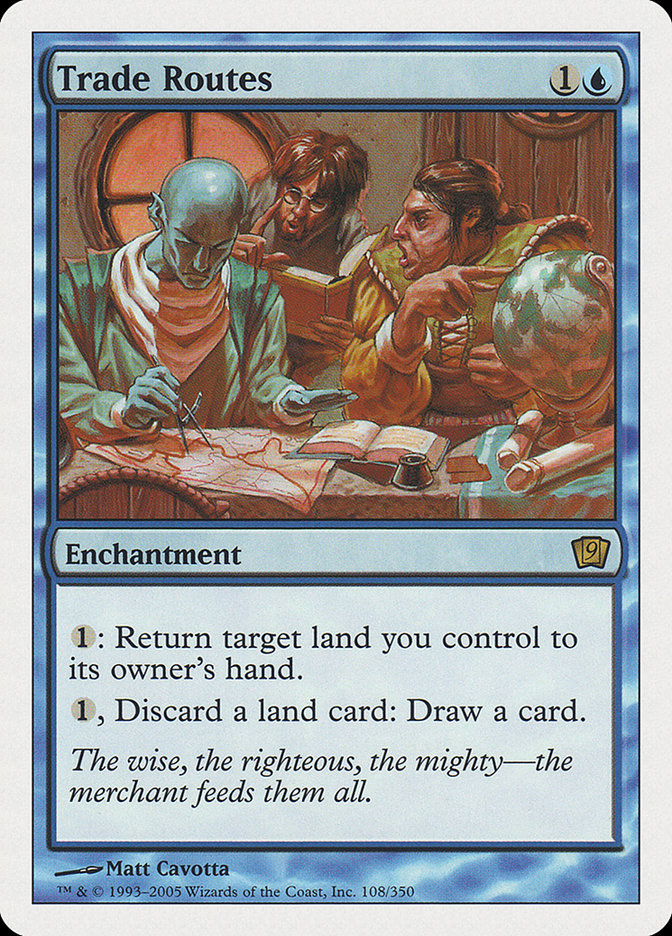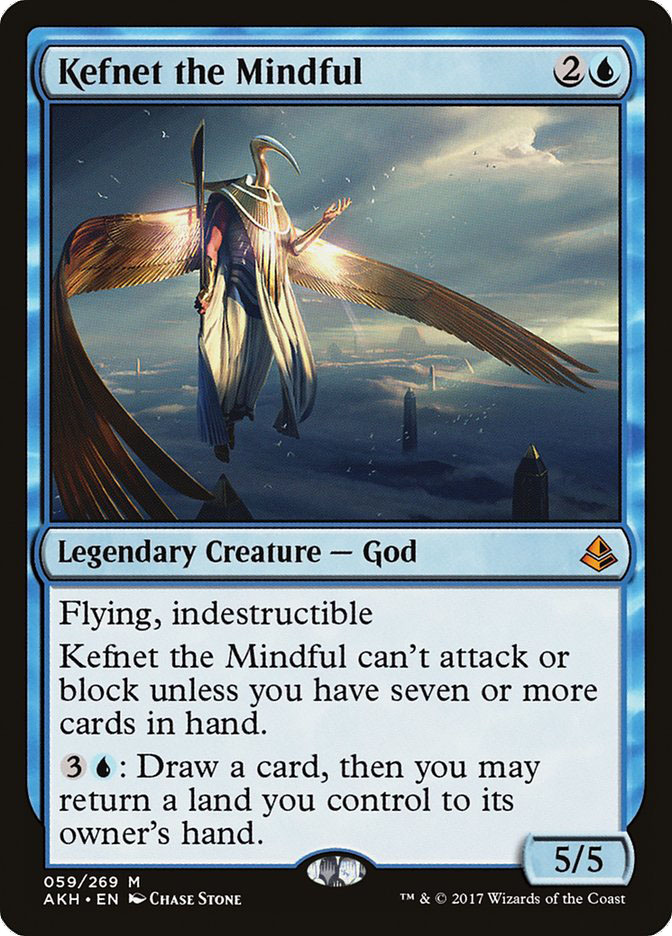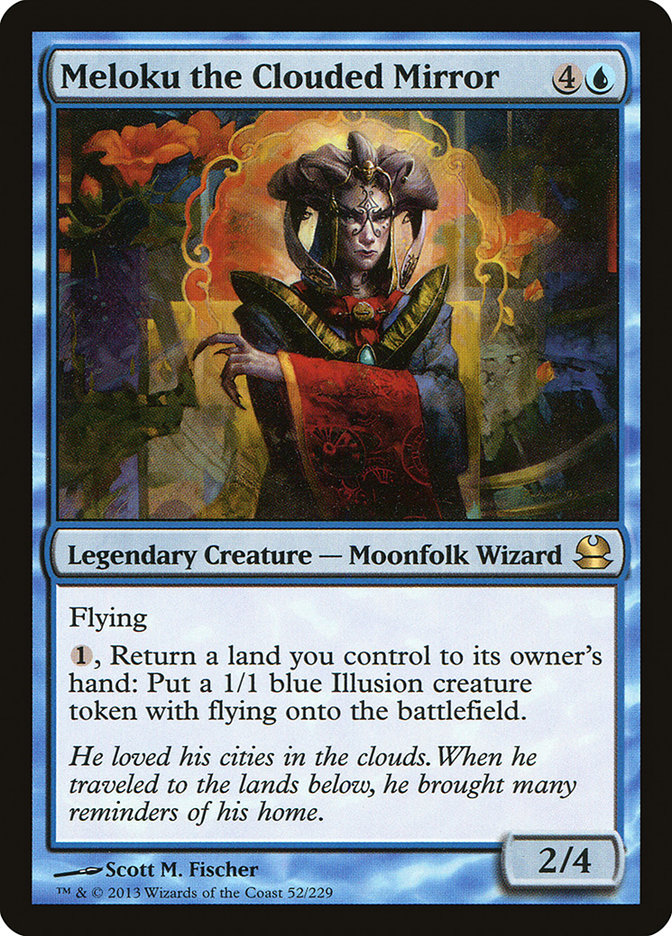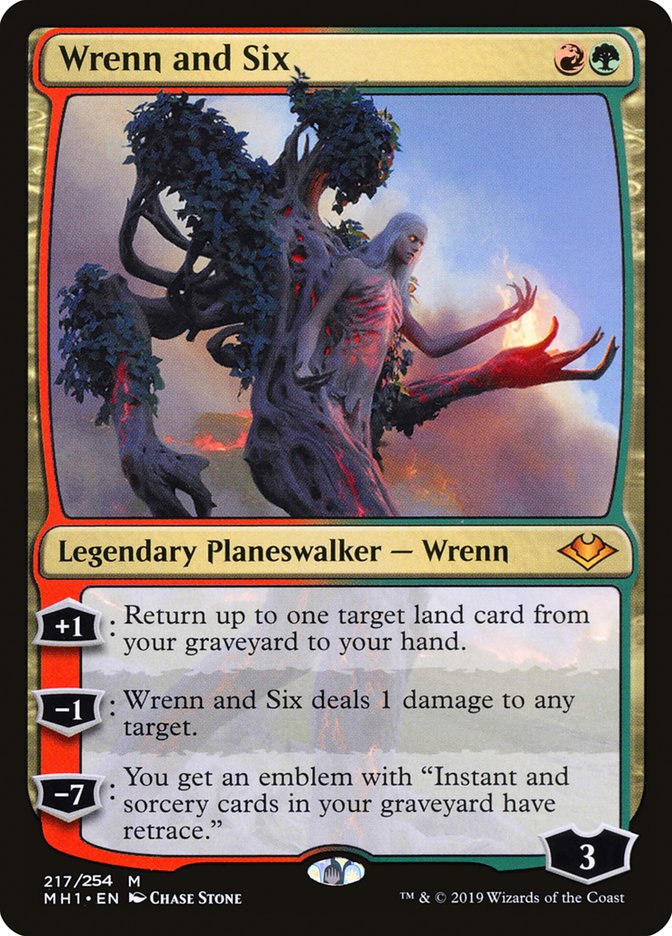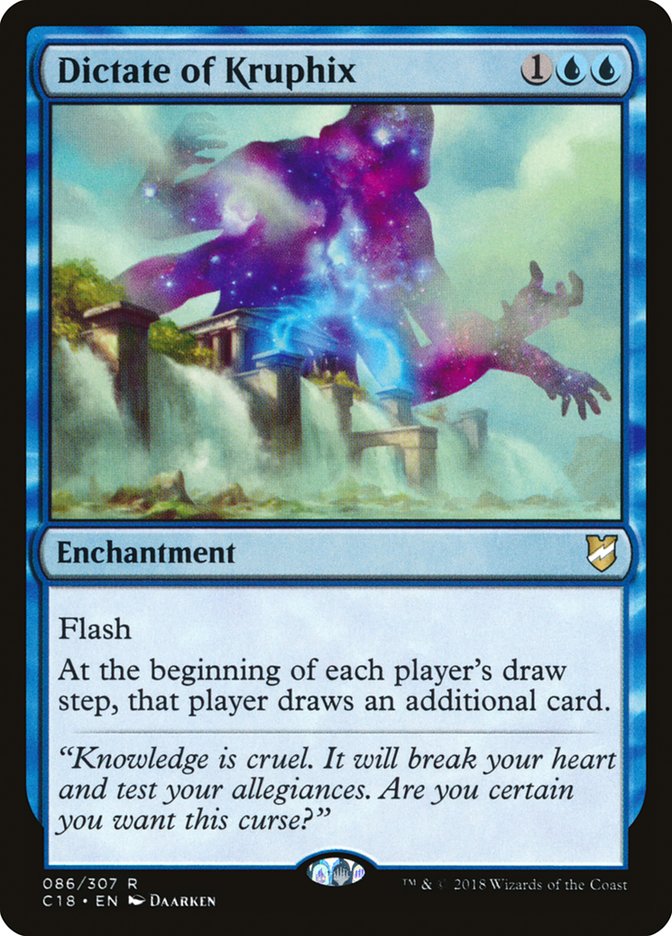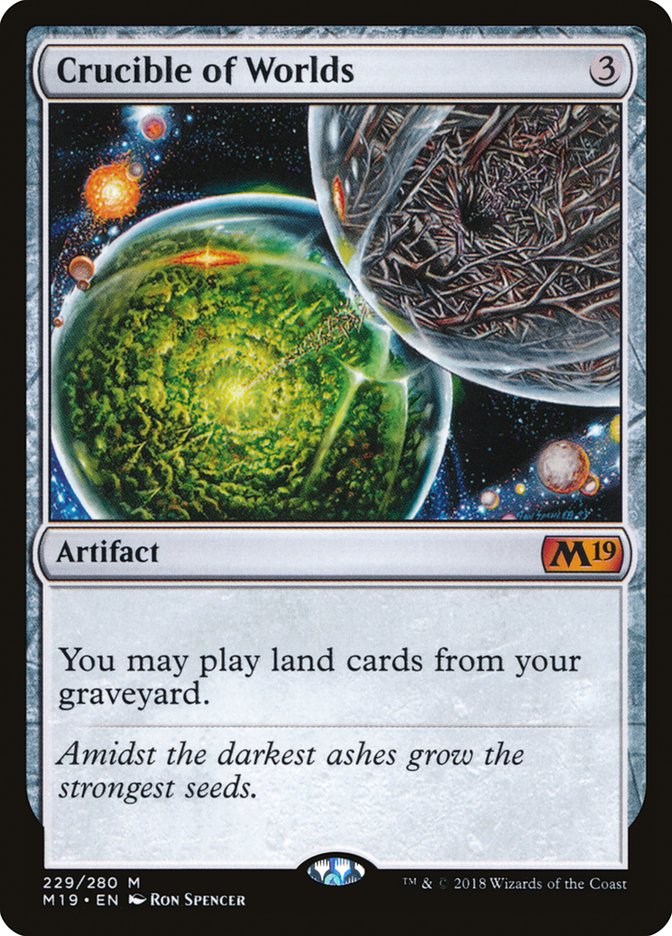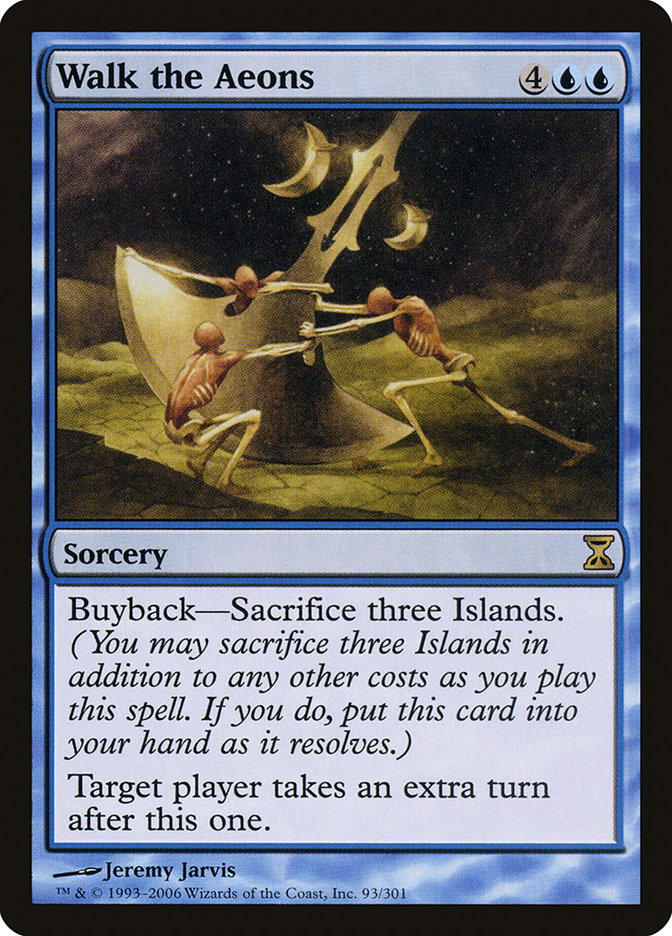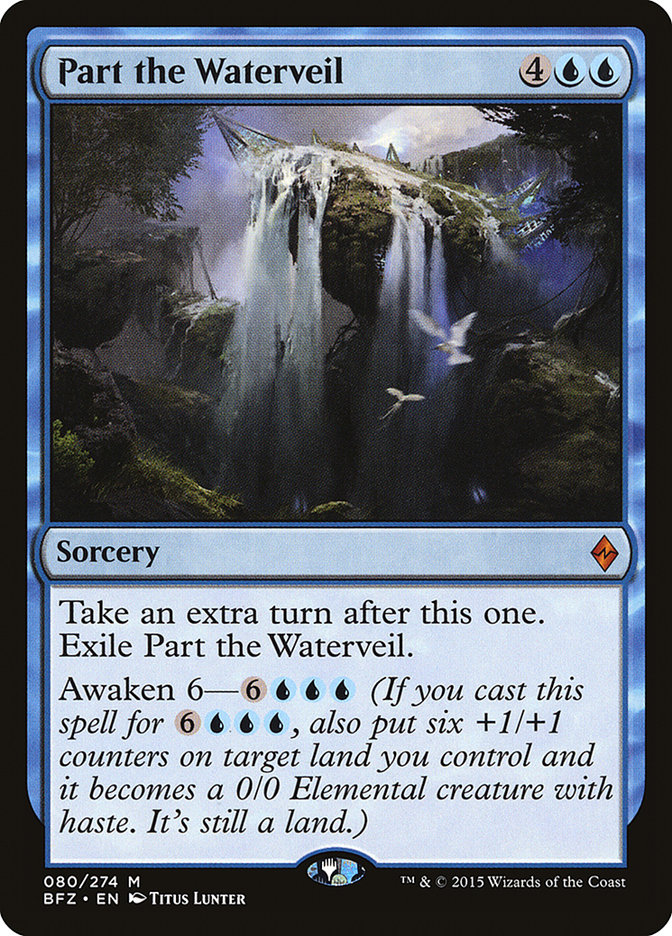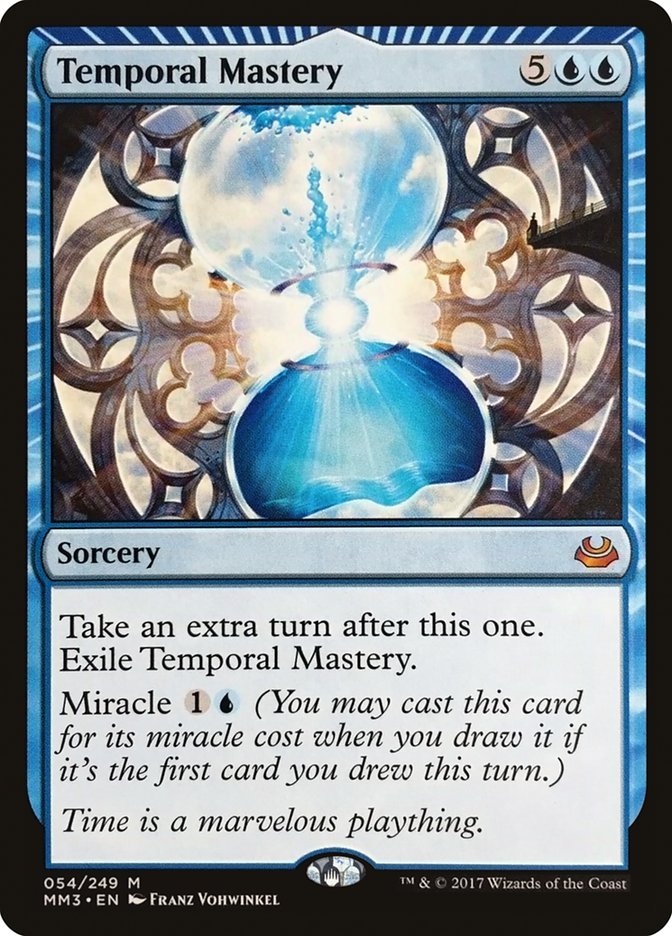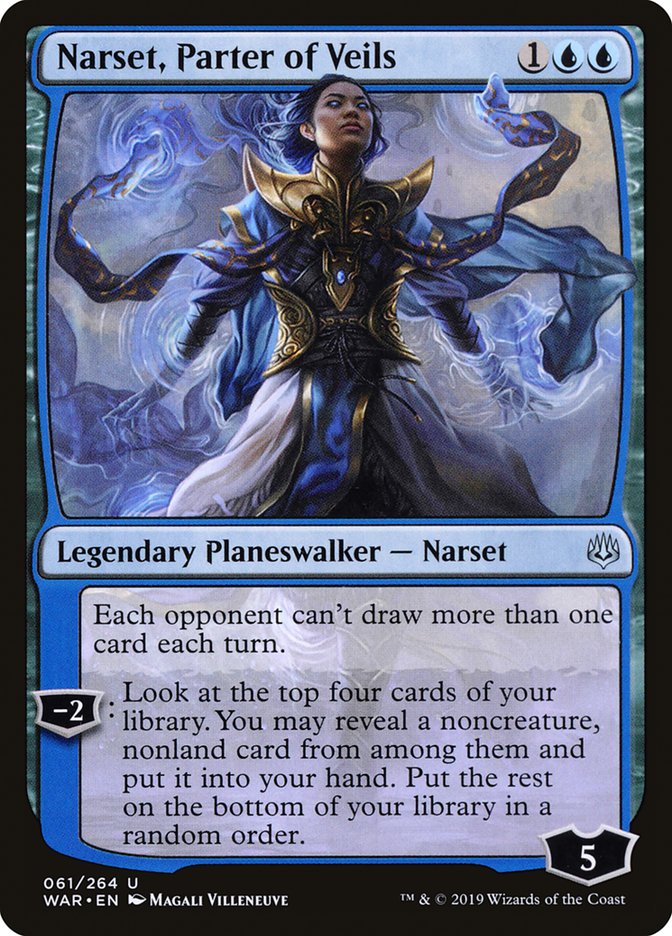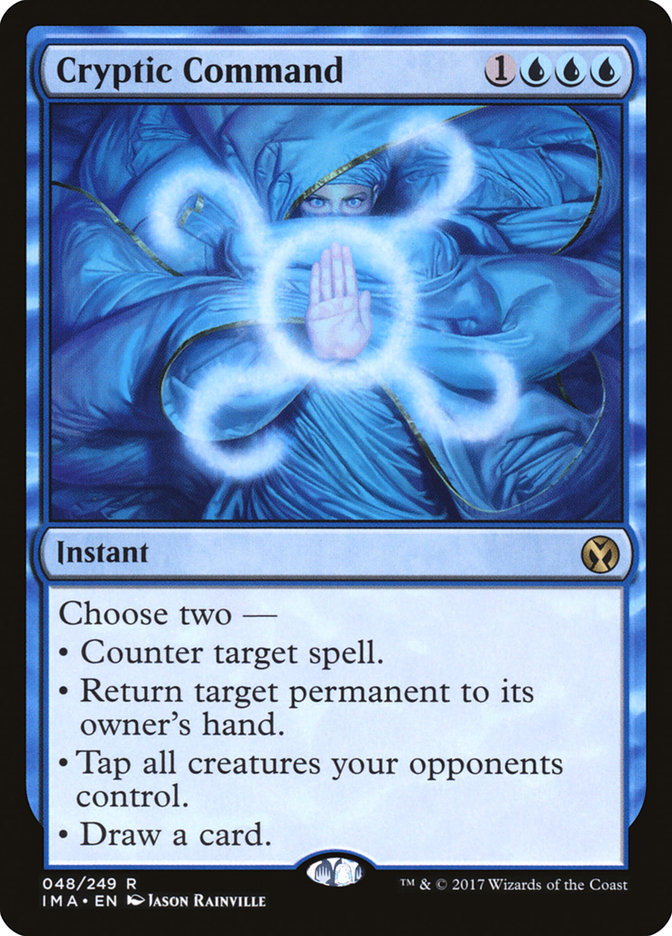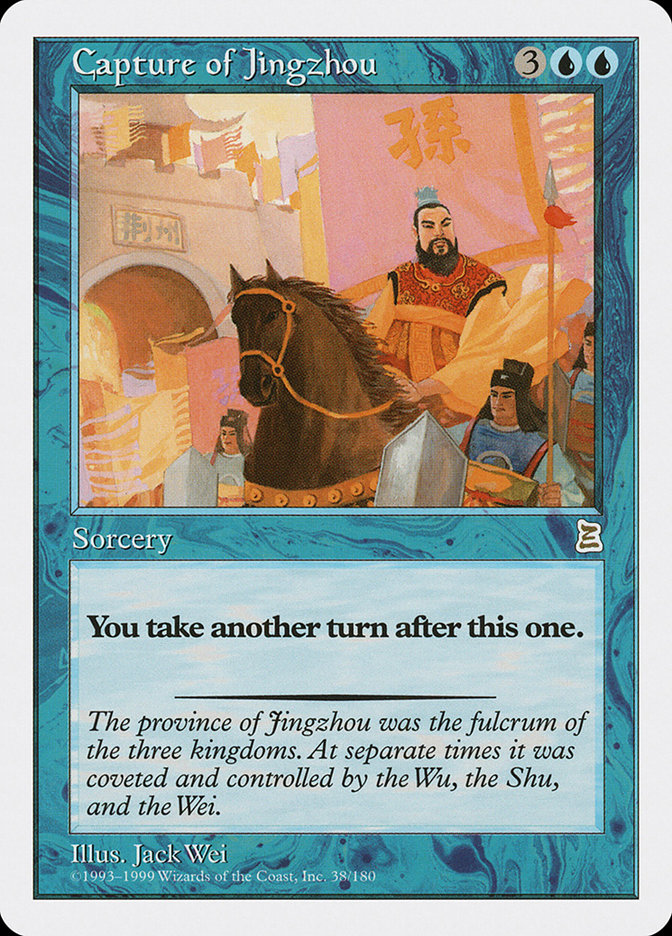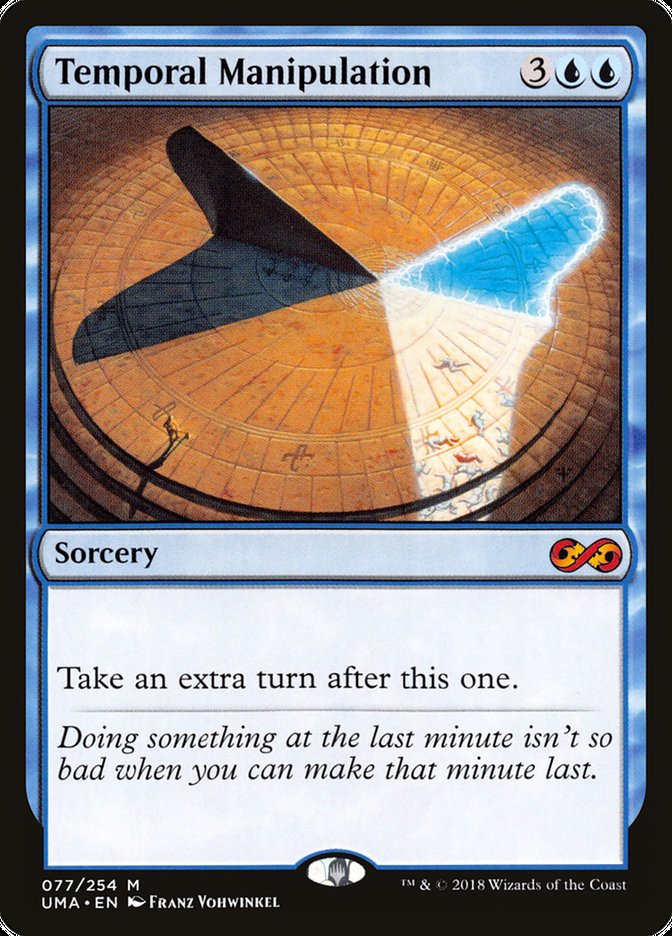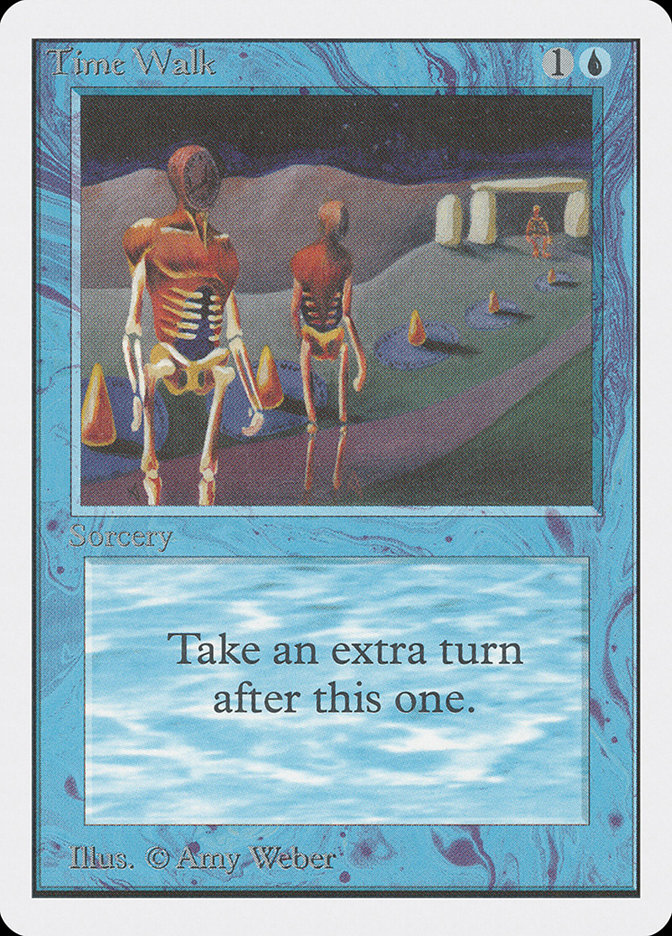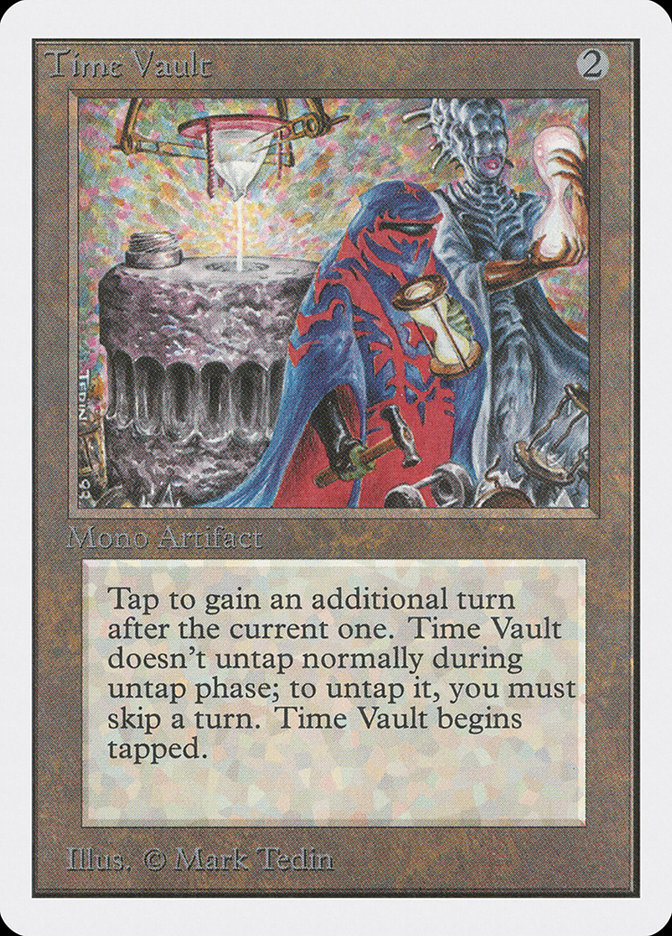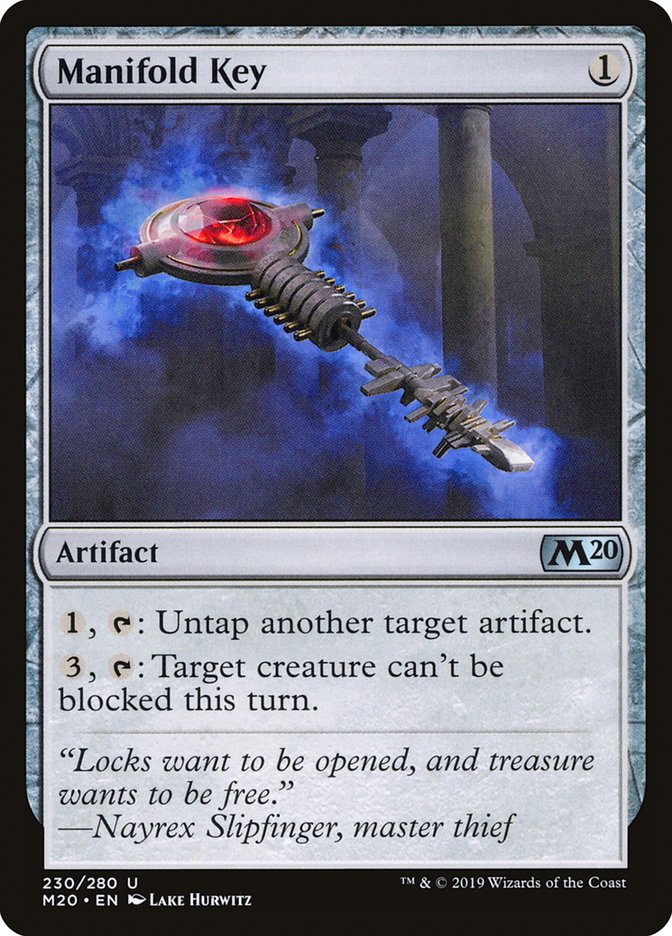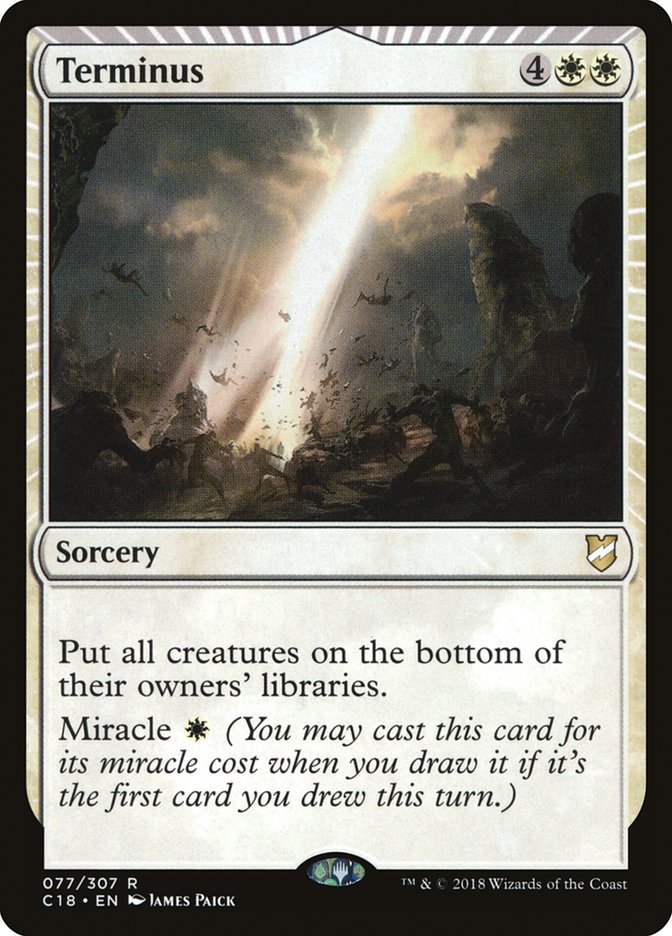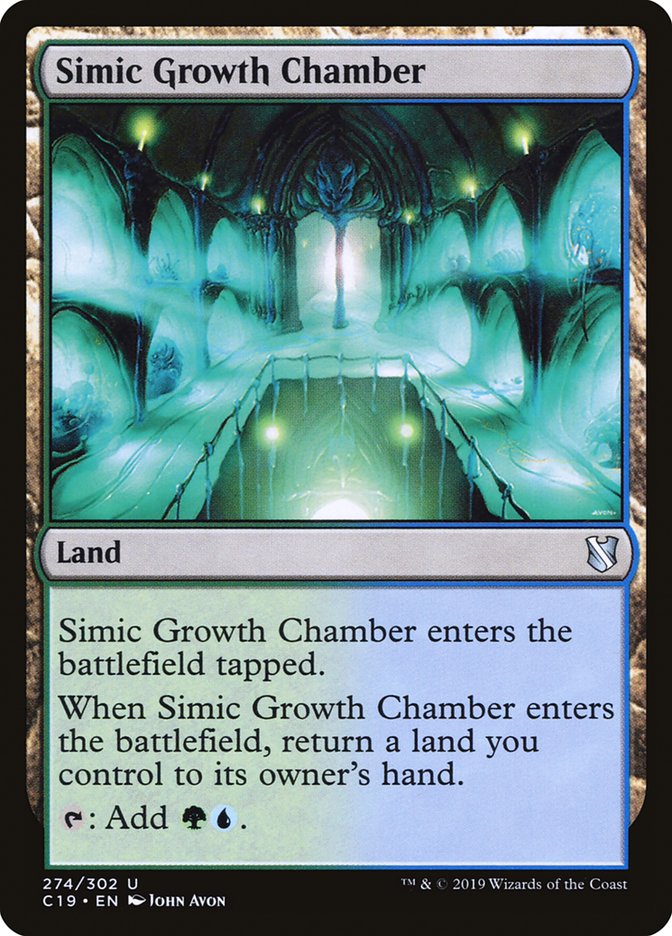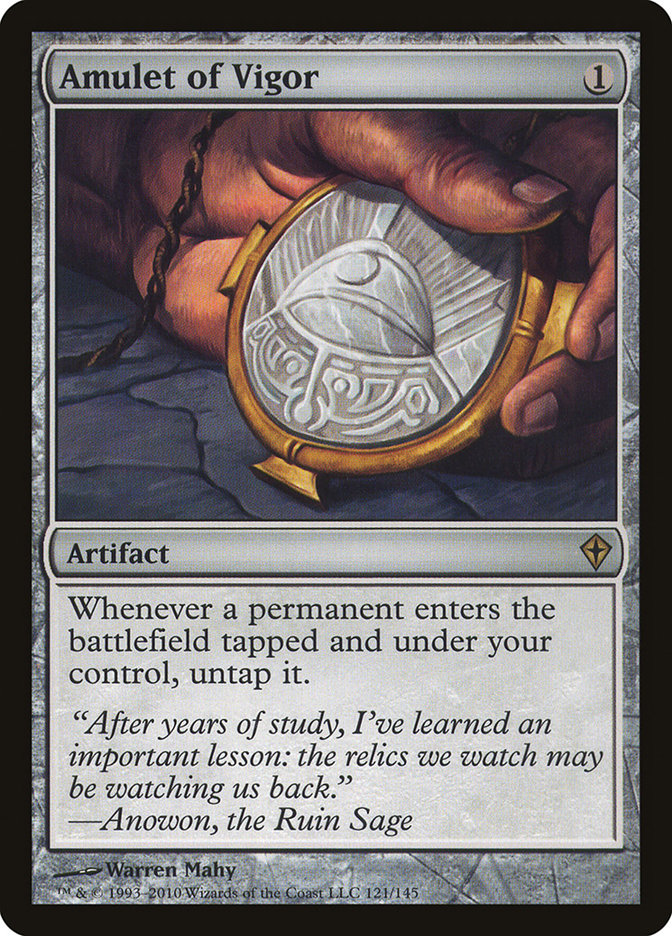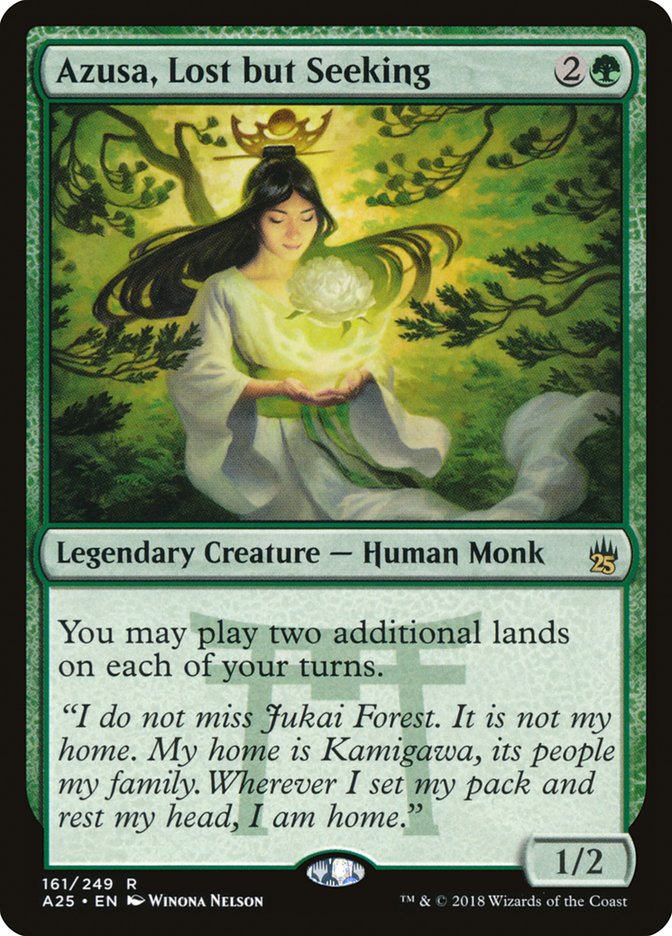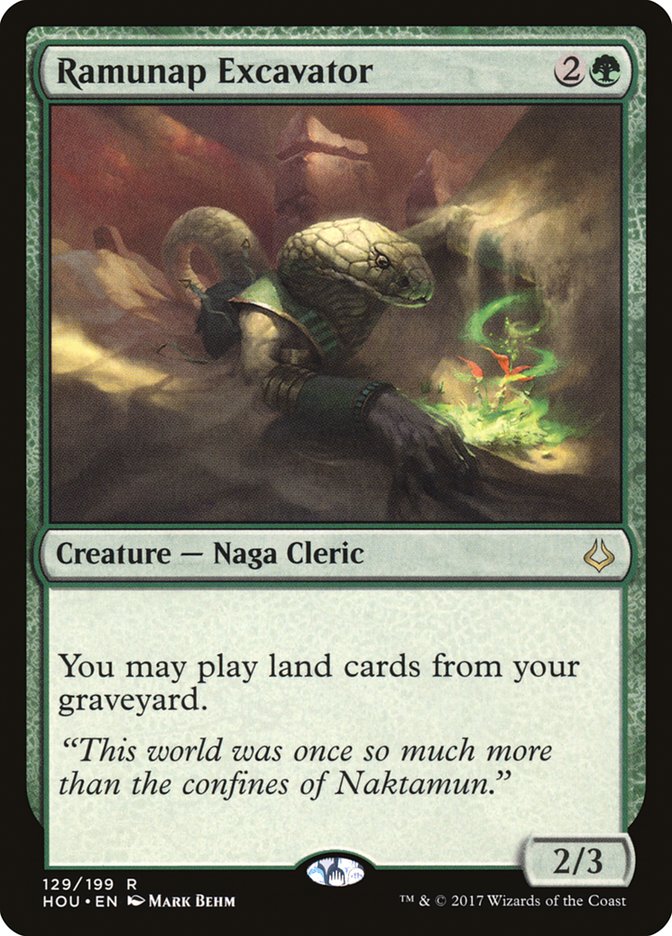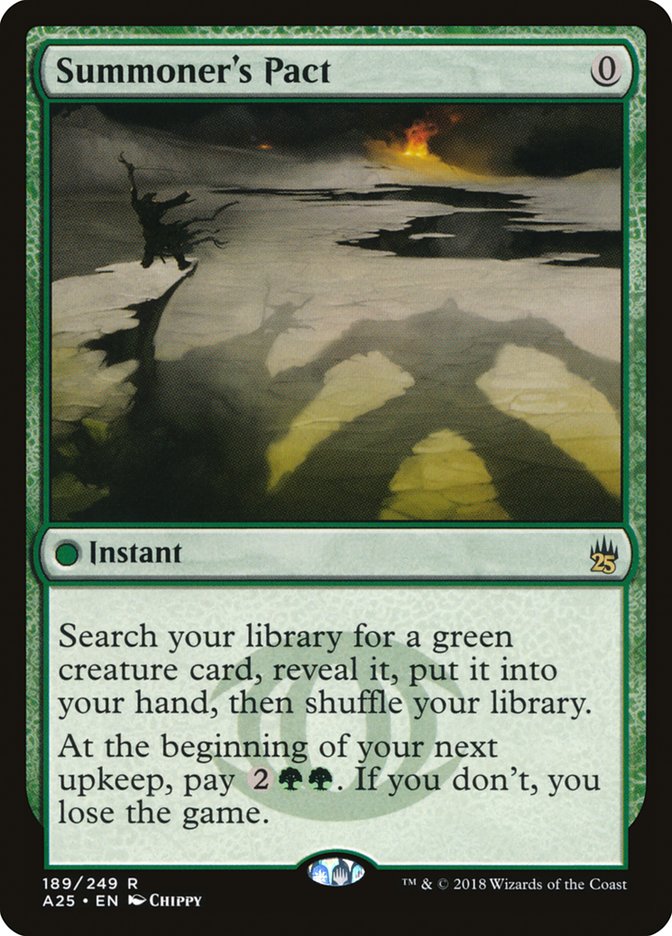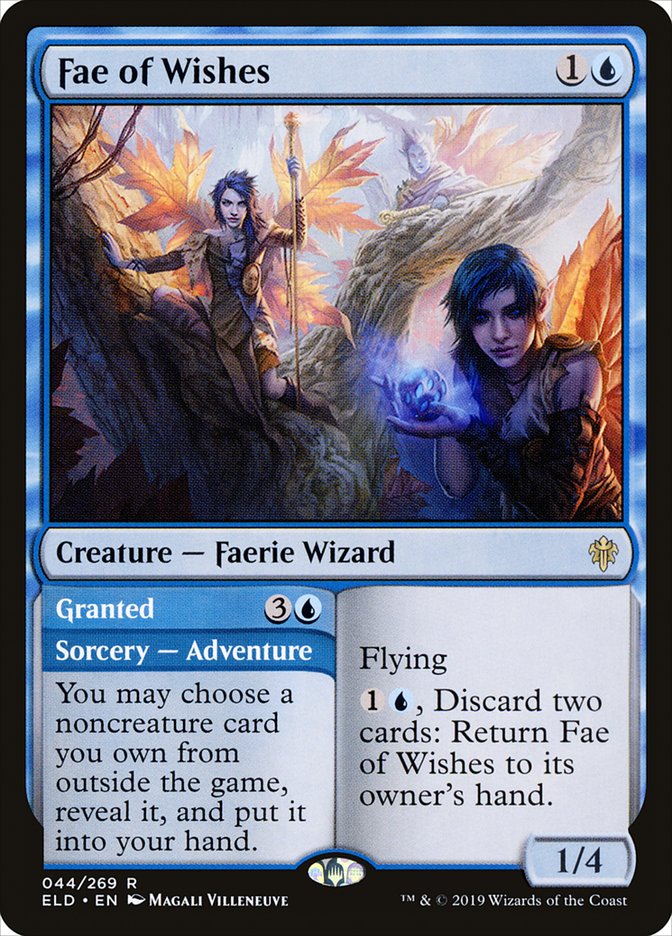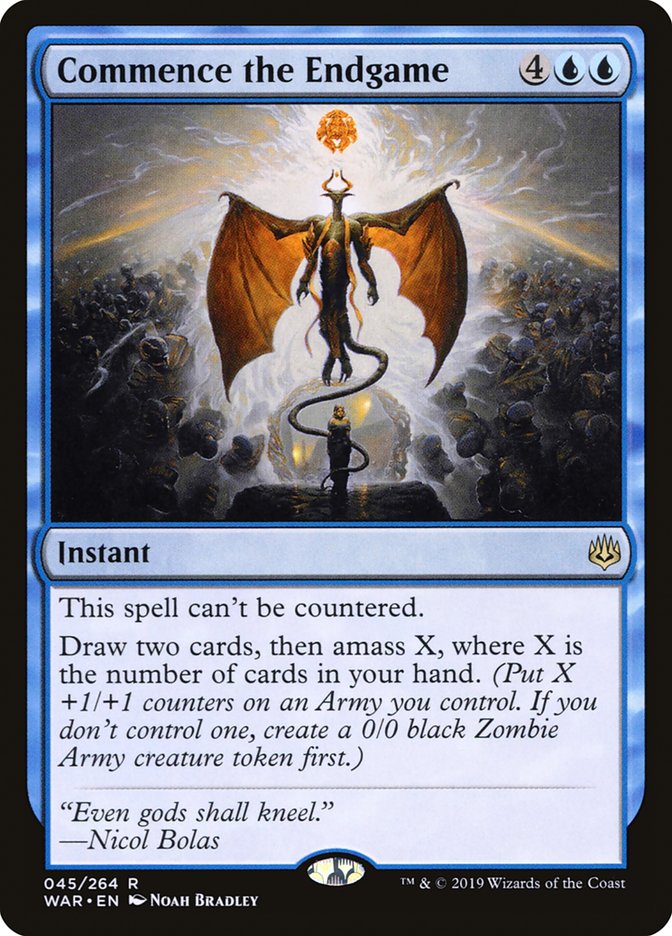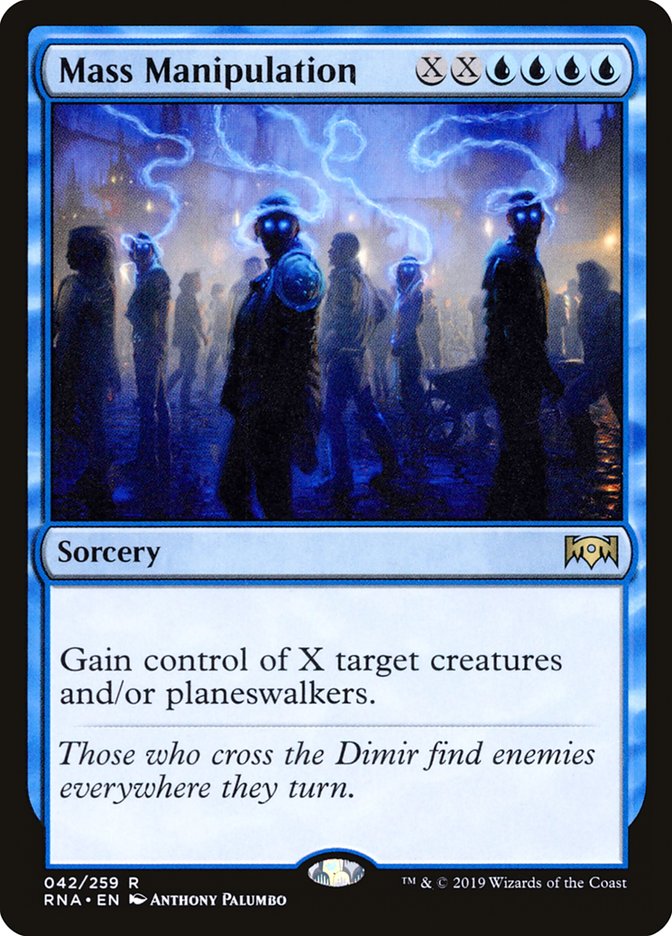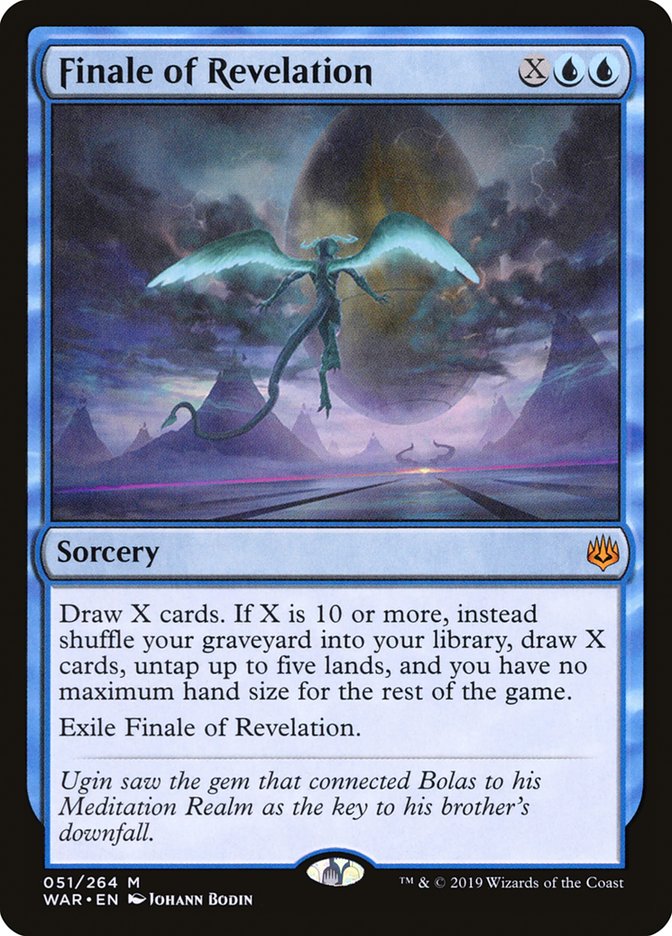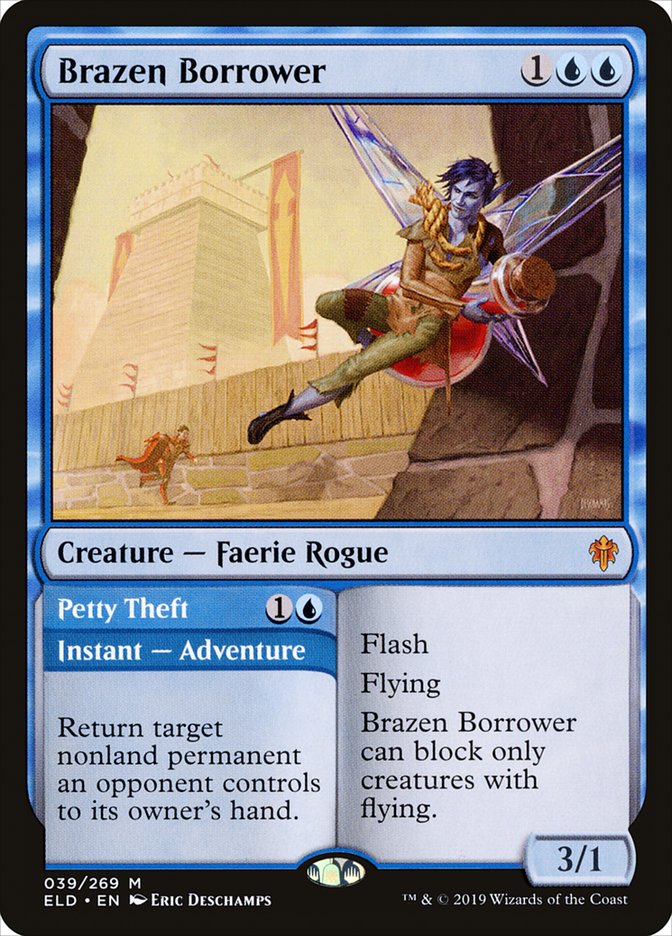Generally, 30%-45% of your deck is land, and that’s to say nothing of the more extreme edge cases. Most of the time, we’ve got to use these slots in our deck to power the other cards that “actually do something.”
Basic lands provide the baseline that we compare all other lands against. There are generally trade-offs we make in exchange for other options. This can take a few forms.
This can involve a sacrifice of mana, resources like life points, the ability to produce colored mana, or even just the risks that go along with legendary nonbasic lands that don’t count as Islands (which is great when combatting things that hate on Islands, like Choke).
A few nonbasics even have the type “Island,” on the other hand, giving them the advantages that go along with this subtype in addition to the risks. Most notable among these advantages is the ability to be found by fetchlands.
Fetchlands are primarily able to find the colors you need (which is obviously easier when you can find multicolor lands), but there are a nonzero number of lands that count as Plains, Islands, Swamps, Mountains, or Forests, while also having some other impact on the battlefield.
Most prominent of these has been Dryad Arbor, giving players a way to use their fetchland to find an uncounterable creature at instant speed. That said, others have shown up.
Blue?
Well, blue’s only offering in this space was never really even close to good enough.
Entering the battlefield tapped is a steep cost and getting such a marginal ability is not exactly inspiring. As if that wasn’t enough, it doesn’t even work unless you have a substantial battlefield.
Throne of Eldraine will change the game in several ways, not the least of which is the addition of a cycle of nonbasics with subtypes and abilities that are stronger and easier to use than most previous options in this space.
Of these, the most easily abused by far is Mystic Sanctuary. That it enters the battlefield tapped early on is not a trivial cost, but it’s certainly meaningfully less of one than a land that entered the battlefield tapped every time. In exchange, we have the option to improve our next draw step by putting a sorcery or instant from our graveyard on top of our deck, assuming we’ve got the necessary three other Islands to play it untapped (and, of course, Mystic Sanctuary being an Island means you don’t get stuck from drawing multiples).
This is such a weirdly powerful thing to be able to get for free from a land. I mean, just compare this output to the other four of this cycle.
A +1/+1 counter, putting a creature back, getting a 1/1, and getting a Food Token are all nice benefits, and all should find at least some fringe use once in a while, but they’re not really as abusable as Mystic Sanctuary.
What makes Mystic Sanctuary so abusable?
Most cards that attack, block, make mana, or do anything else on the battlefield have their power spread out across turns.
Sorceries and instants are inherently much more temporal in nature. They generally have all the effect they are going to have in one moment. They can sit in your hand for long periods of time doing nothing some of the time, but other times, they are the perfect card to draw and have a huge impact on the game.
Mystic Sanctuary gives you a much greater chance of drawing the perfect card, or at least a much better one than random. As long as any one sorcery or instant you’ve already played is better than a random draw, you’re getting upside, and the primary cost is merely the opportunity cost of drawing a tapped land in some other games (or earlier in this one).
This can be used to just try to help you solve problems, which is actually just fantastic for making fetchlands you draw later more powerful. Every Flooded Strand or Polluted Delta sitting on the battlefield is threatening to search up a zero-cost Reclaim for sorceries and instants.
It actually kind of reminds me of how Sensei’s Divining Top turned fetchlands into powerful draw engines, giving you so much more access to the solutions you needed to get out of difficult positions.
Getting a second use out of answer cards is great and all, but we actually go further. How much further?
You know what’s way better than drawing a random card off the top of your deck? Drawing a card that lets you take an extra turn.
What’s even being accomplished?
Well, for starters, you could just go all the way if you wanted to.
With five basic Islands and a Mystic Sanctuary, Trade Routes lets you bounce and play the Sanctuary every turn, letting you Time Warp an arbitrary number of times. If you’ve got any card that lets you advance your battlefield, any creature, any planeswalker, whatever, winning becomes trivial.
Kefnet the Mindful and Meloku the Clouded Mirror are other alternatives that aren’t nearly as cheap and mana-efficient as Trade Routes, but they’re also much better cards on their own, not to mention being reliable win conditions themselves.
You could even go further and combine multiple cards, like Wrenn and Six and anything that can sacrifice lands…
…but do you even need to?
Dictate of Kruphix is just one among many card draw engines that let you leverage extra turns for extra cards without needing to spend extra mana. With even a single Dictate of Kruphix, every extra turn will pull you ahead at a much faster rate. What if you’ve just got enough ways to draw extra cards and take extra turns that once you start going off, you usually just accelerate, faster and faster?
Creatures (2)
Planeswalkers (6)
Lands (23)
Spells (29)

Rather than take infinite turns, you could just try to take enough. Still, why not dream big?
Early, Crucible of Worlds can be a source of extra land, as you can just fetch turn after turn. Once you get rolling, Crucible of Worlds means you can fetch up to four Mystic Sanctuaries in a row. Even without another card draw engine, that jumps us from six mana straight up to ten. If we’ve got anything else going on, that’s probably going to be game.
Walks the Aeons is the next-best Time Warp available in Modern on account of it not getting exiled (which is obviously crucial to our plans for recursion), unlike Part the Waterveil and Temporal Mastery.
Maybe it’s right to play some number of them too, but at least out the gate, I want to be mindful of not overloading the deck with cards that are good when we’re already winning.
Walk the Aeons isn’t just a six-cost Time Warp, though. There is also that whole buyback clause. This is particularly interesting in a deck with Mystic Sanctuaries and Crucible of Worlds. After taking five turns in a row because of Crucibling out all the Sanctuaries, you can Walk the Aeons with buyback, sacrificing three Mystic Sanctuaries. That’s three more turns right there, not to mention the extra turn you’re getting from the Walk the Aeons with buyback. Three turns from now, you’ll have all the Sanctuaries on the battlefield and can just buyback the Walk again.
Narset is a powerful card, just straight-up, but it’s actually especially strong in a deck like this. It digs very deep for such a low mana cost. It’s also powerful alongside Dictate of Kruphix. As long as Narset is on the table, Dictate of Kruphix is now one-sided!
With so much of our deck dedicated to drawing cards and taking turns, we need a reliable victory condition that can win from any position, assuming we have all the turns.
Cryptic Command can do a pretty serviceable Time Warp impression, thanks to the tap mode, but it actually combines even better than you might expect with Mystic Sanctuary, thanks to the bounce ability. Inside your opponent’s attack step, you can tap all their creatures and bounce your Mystic Sanctuary. Next turn, play the Sanctuary and put Cryptic Command back on top of your deck. With any card draw engine, or even just a second Cryptic Command, you can actually keep this up forever, locking many opponents out of the game entirely.
I’m not sure it’s fast enough, but it might even be possible to play something like this in Legacy.
Planeswalkers (5)
Lands (21)
Spells (34)

No Time Warps?
I mean, maybe we want even more, but Capture of Jingzhou and Temporal Manipulation are probably better, to say nothing of how obviously stylish they are.
Unlike Time Warp and Walk the Aeons, they don’t target. This means they can avoid having the extra turn Misdirectioned, or whatever. That’s a pretty small advantage, so maybe we’re supposed to play a bigger variety, hedging against Meddling Mage, but for now, the style.
I guess you could play this in Vintage. I mean, that’s certainly a format with a lot of fetchlands and a lot of busted sorceries and instants.
Of course, you can also play literal Time Vault, so…
While Temporal Mastery might be sweet to put on top, ensuring you can get the two-cost extra turn, it also requires having discarded the Mastery in the first place. That’s kind of a lot of hoops. On the other hand, Terminus is just filthy to rebuy on demand, particularly when you’ve got something like Opt to draw it on your opponent’s turn, right away.
Creatures (1)
Planeswalkers (5)
Lands (25)
Spells (29)

Despite no explicit extra turn cards, we’ve still got the Cryptic Command loop, which is a pretty powerful lock to have access to with almost no opportunity cost.
Likewise, we could try something similar in Legacy, too:
Creatures (5)
Planeswalkers (6)
Lands (20)
Spells (29)

In investigating Mystic Sanctuary in decks that aren’t actually trying that hard, maybe we can go even more “normal,” with a focus on powerful cards rather than synergies.
With Stoneforge Mystic newly legal, there’s a lot of appeal to building around it. Could Mystic Sanctuary in small numbers actually be low-cost enough to be worth it, even if we’re mostly just getting Path to Exile or Cryptic Command?
Creatures (8)
Planeswalkers (5)
Lands (25)
Spells (24)

One other path worth considering in Modern is in some sort of Primeval Titan deck.
Primeval Titan finding Simic Growth Chamber and Mystic Sanctuary might be overkill with Time Warp, but a lot of the infrastructure is already there and works well together.
I’m not sure if we’d want it, but Ramunap Excavator can do Crucible of Worlds duty in a Summoner’s Pactable form if we’re trying to do that whole thing.
There is at least one major change compared to existing Primeval Titan decks that would be necessary if we’re to make Mystic Sanctuary work. Even counting Breeding Pools, that’s a lot more Islands than we usually use.
What about Standard?
While there aren’t Time Warp or Cryptic Command-level sorceries and instants to rebuy, it’s not necessarily a non-starter to play Mystic Sanctuary for value. First of all, if there’s another Mono-Blue deck, Mystic Sanctuary might just be a low-cost addition for added selection, particularly when it lets you replay powerful sideboard cards game one, thanks to Fae of Wishes.
Fae of Wishes is crazy strong and will be discussed at length by Paulo Vitor Damo da Rosa later this week. In short, a 1/4 flyer for two is already interesting, and that bounce ability has some value; all that is to say nothing of the option to pay four mana for a draw-two, where one of the cards is the best noncreature out of your sideboard and the other is a 1/4 flyer for two with upside.
If we’ve got powerful haymakers in our sideboard, Mystic Sanctuary gives us extra uses of them, not to mention the flexibility of rebuying Aether Gust or whatever.
Creatures (16)
- 2 Spectral Sailor
- 4 Brineborn Cutthroat
- 1 Hypnotic Sprite
- 1 Gadwick, the Wizened
- 4 Fae of Wishes
- 4 Brazen Borrower
Lands (22)
Spells (22)

I don’t think we’re likely to actually end up with fifteen Fae targets in the sideboard, but I generally like starting testing with more options and seeing which ones I actually get, which I actually need, and which would have worked out with some other target, if it came to it.
Two mana for a bounce spell that can only hit enemy nonland cards is only barely overcosted (and not even by a full mana). Then we get the 3/1 flyer with flash, even if it can’t block much.
In addition to the common cycle of lands in Throne of Eldraine, there’s a cycle of rares that need only a single land of the appropriate type to enter the battlefield untapped. They are pretty low-cost additions to decks in general, though we do have to be careful in a deck with Mystic Sanctuaries, as they don’t count as Islands.
Castle Vantress isn’t the most mana-efficient option on the block, but the option sure doesn’t cost us much in a deck with this many Islands. In addition to small use maindeck, we might also consider it as the land in our sideboard that lets Fae of Wishes serve as another option for building our mana.
Out of the gate, however, I wanted to start with Blast Zone, as it’s also a really flexible answer to problematic permanents, which isn’t exactly Mono-Blue’s strong suit. While I think one land in the sideboard is more likely, it’s not actually out of the question to consider a second, depending on how much utility we’re getting out of the options.
When you think about just how impactful Dryad Arbor has been over the years, it’s pretty crazy to think they just made five more. The ripples from this paradigm shift will take time to sink in. For instance, no sooner had Prismatic Vista burst onto the scene than the printing of stuff like Mystic Sanctuary dealt a serious blow to the card.
While Flooded Strand finds Islands or Plains, Prismatic Vista finds explicitly basic lands. Its inability to find Mystic Sanctuary types isn’t a death knell, as some decks just won’t play those cards. Still, it’s going to subtly change some aspects of the game…

…and others, not so subtly.


